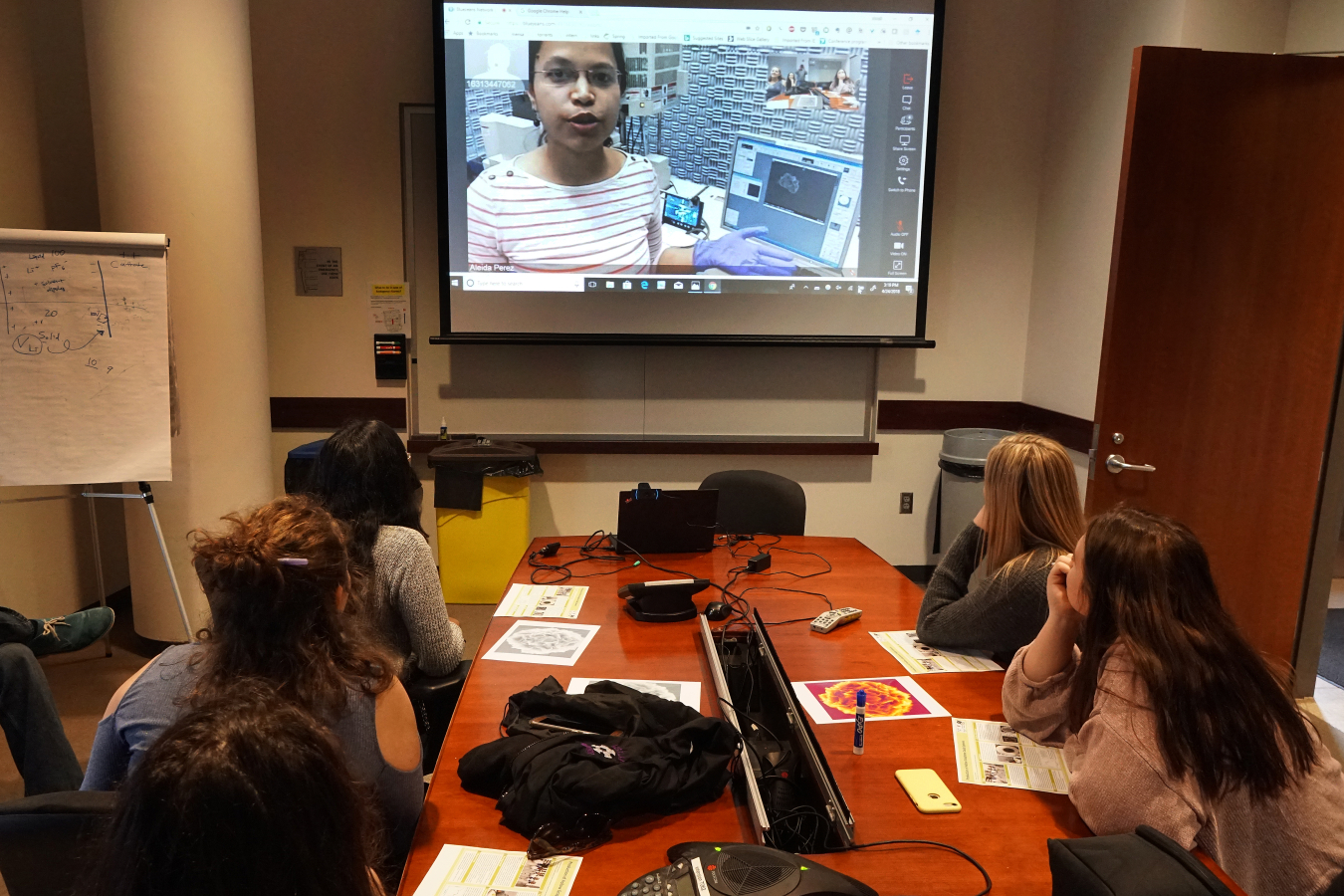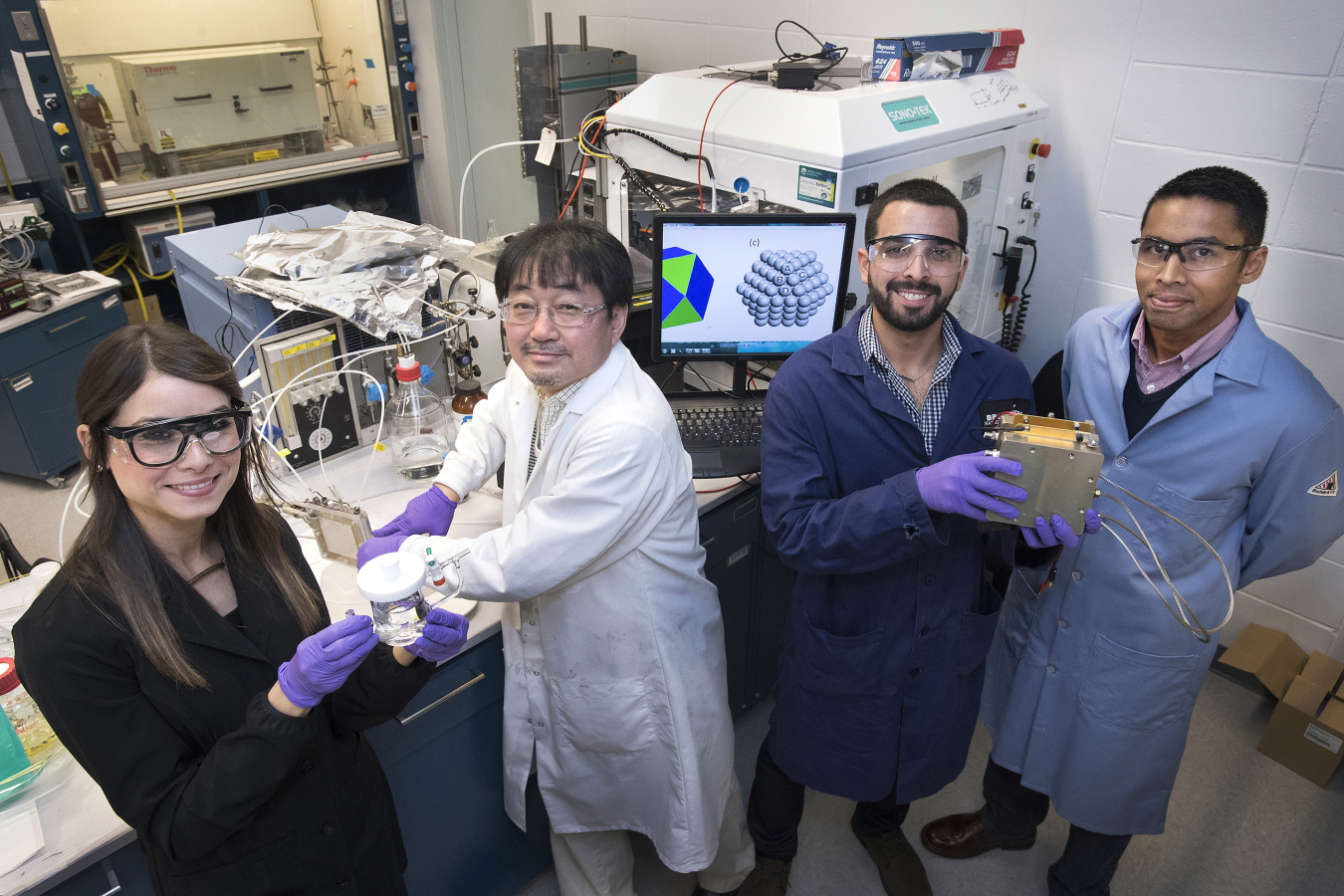Brookhaven National Laboratory Director Doon Gibbs shares why welcoming interns to the Lab is one of his favorite STEM moments.
July 25, 2018One of my favorite roles as a National Laboratory Director is welcoming about 200 students each June when they arrive on site for Brookhaven Lab’s summer internship programs. These students, from a remarkable diversity of backgrounds and cultures, and from colleges and universities across the nation, are about to join of one of the most impactful scientific research communities in the world – the U.S. Department of Energy (DOE) National Laboratory system.

DOE Under Secretary for Science Paul Dabbar opened Brookhaven Lab’s 2018 summer internship program speaking to an auditorium full of college students ready to explore their passion for discovery here. Under Secretary Dabbar, the executive science leader of the DOE research enterprise, shared his excitement for the innovation and discovery possible at National Labs. He discussed his belief that the next revolution in computing, the next breakthrough in advanced particle detectors, the ability to explore Mars, or the deeper understanding of the atomic nucleus will likely come from researchers working at DOE National Laboratories.
The Under Secretary’s overall message to the new scientists: There’s a place for you at the National Labs in solving challenges that are critical to our nation. The labs are home to visionary scientific advances, but also play a role in entrepreneurship and innovation — they conceive, invent, and do — and you can be part of that.

At each opening ceremony, you can feel the excitement in the audience. The students are meeting each other for the first time, wondering what kinds of work they will be doing, and no doubt, wondering what it will be like to live on Long Island in New York for eight weeks. The biggest requirement for success is simple—it’s indulging your passion for discovering new things using remarkably sophisticated facilities and ideas, and then thinking about how to use what you learned to make the world a better place. It’s fun to be a scientist, working with other scientists, and that comes through from this group every year.

The students have much in common with those of us who have been in the Lab system for years. We like testing new ideas by working on experiments at the lab bench, collecting data in the field, or employing one of the Lab’s premiere research facilities. Then, analyzing and thinking through the collected data, and using advanced computing to produce answers that will take our work to the next level.
The interns have a chance to do that in our large user facilities and labs when they, for example:
- Analyze the structure of a biological protein using tools at the National Synchrotron Light Source II, underpinned by sophisticated data collection and computational modeling techniques.
- Are part of a team synthesizing medical radioisotopes that have the potential to cure cancer.
- Discover new materials for solar cells using tools at the nanoscale level to advance our ability to capture and convert the sun’s energy more efficiently.
- Explore the origins of visible matter using the Relativistic Heavy Ion Collider, replicating the conditions of the universe one millionth of a second after the Big Bang.
It is a privilege for us to host the more than 35,000 elementary, high school, and college students and teachers who come to Brookhaven each year. It is a national imperative to inspire the next generation of scientists and engineers, reaching further and more inclusively than we ever have before, to advance the scientific enterprise and keep the U.S. at the leading edge of discovery.

At the end of the 10-week summer session, I always tell the students, “We want you back,” either for another internship, as a graduate student or post-doc, or as a staff scientist—whether that’s at Brookhaven or another National Lab. I also invite them to write to me personally —if they’re interested in what we’re doing, if they’re looking for a job, or if they just want to say “hi.” That’s our goal—to nurture and sustain a connection with science that they’ll carry throughout their careers.
Cultivating their enthusiasm and talent, and taking advantage of the diversity of their backgrounds and cultures, is an essential task for us and for the nation. This next generation of scientists and engineers will drive discovery and innovation, and the world will be a better place for it.
Doon Gibbs
Doon Gibbs leads Brookhaven National Laboratory, a multi-program U.S. Department of Energy laboratory with about 2,700 employees, more than 2,500 facility users each year, and an annual budget of about $600 million. Home to seven Nobel Prizes, Brookhaven Lab features a research portfolio that ranges from fundamental science to innovation, development, and commercialization of technologies, with major programs in nuclear and high energy physics; energy science and technology; biological and environmental research; nonproliferation and national security; and data-driven computational science. Brookhaven Lab's main user facilities include the National Synchrotron Light Source II, the Relativistic Heavy Ion Collider, and the Center for Functional Nanomaterials.
Doon Gibbs earned a B.S. in physics and mathematics from the University of Utah in 1977, and an M.S. and Ph.D. in physics from the University of Illinois at Urbana-Champaign, in 1979 and 1982 respectively. He joined Brookhaven in 1983 as an assistant physicist and progressed through the ranks to become a senior physicist in 2000. Gibbs's science career focused on studying magnetic materials and surfaces using x-ray scattering. His managerial experience at Brookhaven includes the posts of Group Leader of X-ray Scattering, Associate and Deputy Chair of Physics, Head of Condensed Matter Physics, Interim Director of the Center for Functional Nanomaterials, Associate Laboratory Director for Basic Energy Sciences, and Deputy Laboratory Director for Science and Technology. He became Laboratory Director in 2013.
Gibbs was the 1991 E.P. Wohlfarth Lecturer in Physics at the Institute of Physics in the United Kingdom and won the 1985 DOE Outstanding Scientific Accomplishment in Solid State Physics. He was honored with the 2003 Advanced Photon Source Arthur H. Compton Award "for pioneering theoretical and experimental work in resonant magnetic x-ray scattering, which has led to many important applications in condensed matter physics." Gibbs is a Fellow of both the American Association for the Advancement of Science and the American Physical Society.
At Brookhaven, Gibbs was instrumental in overseeing the design and construction of the Lab's Center for Functional Nanomaterials, and has played a significant role in advancing other major Lab projects including the National Synchrotron Light Source II, the Interdisciplinary Science Building, the Computational Science Initiative, and Discovery Park. He currently serves as a Board member of the Long Island Regional Economic Development Council, the Long Island Association, and Stony Brook University’s Advanced Energy Research and Technology Center, and has played an important role in raising the Laboratory's profile both nationally and within New York State. Gibbs also serves as President of Brookhaven Science Associates, the organization founded by Stony Brook University and Battelle to manage and operate the Lab on behalf of DOE’s Office of Science.

